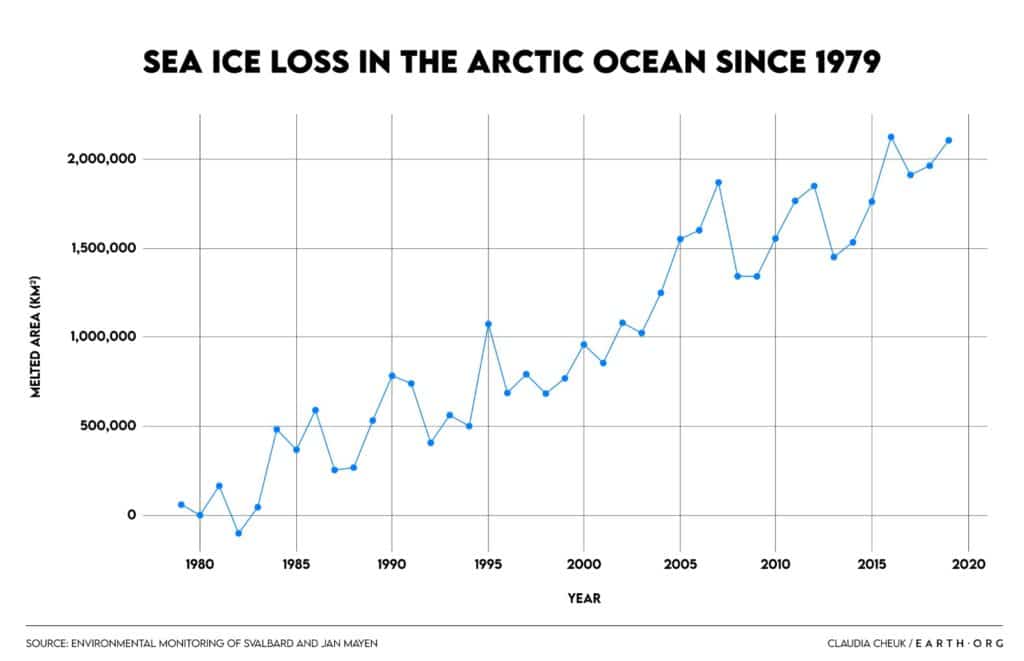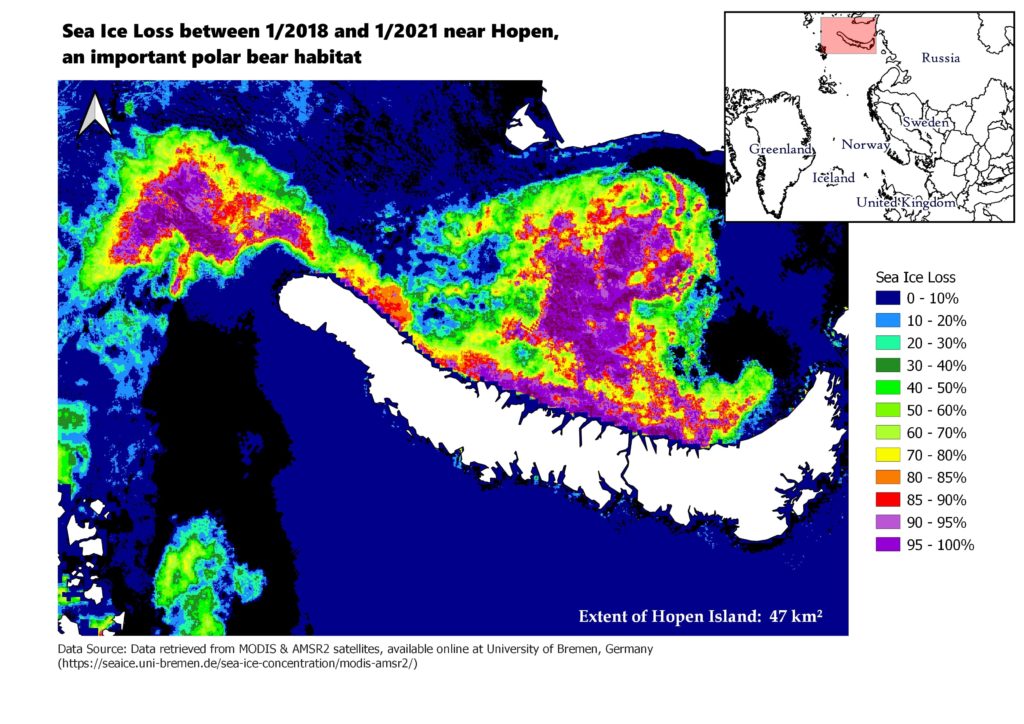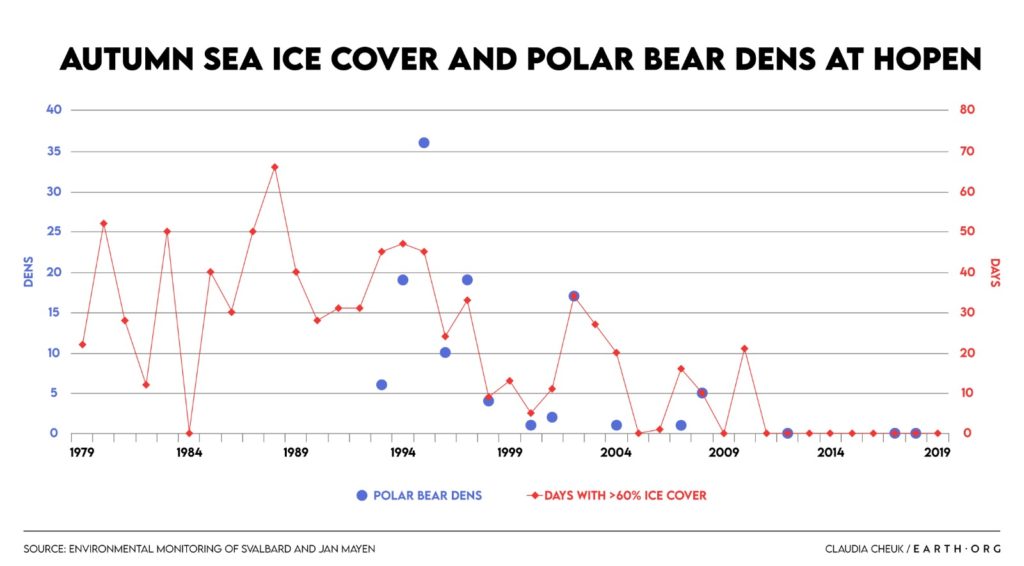As we exit the hottest decade on record, the latest reports describe record rates of sea ice loss. While we may yet weather the resulting rise in sea levels, beautiful animals like the polar bear may not have the adaptative capacity to survive the accelerating sea ice decline.
Earth.Org takes a closer look.
—
The Earth’s ice, referred to as the cryosphere, comes from rain and snow precipitation in Antarctica, Greenland and the snow-capped mountaintops, and from frozen sea-ice in the Arctic and Southern oceans.
A recent study showed that annual ice melt has gone from 0.8 to 1.2 trillion tons since the 1990s, equivalent to the weight of all life on earth.

The polar ice sheets store more than 99% of the Earth’s freshwater ice on land, and even modest losses contribute significantly to the slow rise of the planet’s sea level. Worst case scenarios predict a 1 to 2 meter rise in the water table by the end of the century, which would be catastrophic for the more than 600 million people living in low coastal zones, plus the infrastructure loss. Whether this happens or not, we will adapt, but such flexibility is not within the means of other animal species.
Of particular importance to certain lifeforms are the ice shelves, large platforms of ice that form downhill from a glacier or an ice sheet and stretch out on the ocean. Their stability (thickness and area) provide a barrier to glacier ice outflow, and many have collapsed in recent decades, especially around the northernmost islands of Canada and Russia.

The problem is that some animal species rely on these ice shelves. Polar bears in particular are helpless as their habitat rapidly changes around them. With ice-free summers looming, gaining access to preferred den locations and their favorite prey is becoming increasingly difficult.
Observations taken by the Environmental Monitoring of Svalbard and Jan Mayen show the correlation between sea ice decline and polar bear den counts over the years.

A new study looked at how polar bears would fare under the worst, and second-worst climate change scenarios (RCP 8.5 and 4.5 respectively), and found that the pathway makes a difference. The sub-populations in the southern regions of the Arctic are more vulnerable to warming, and in fact are already experiencing demographic decline. Looking ot the future, the RCP 4.5 scenario means the mid-to-northern counterparts remain unscathed for the rest of the 21st century, but in a business-as-usual scenario, all populations suffer. The next decade will be crucial in mitigating the adverse effects of climate change for future generations, human and animal alike.
This article was written by Owen Mulhern, research and figures provided by Ka Hei Chow. Cover photo by Hans-Jurgen Mager on Unsplash.
You might also like: NASA Imagery: Louisiana is Losing its Coastline
References
-
https://tc.copernicus.org/articles/15/233/2021/
-
Nature Climate Communications










![The Statistics of Biodiversity Loss [2020 WWF Report]](https://u4d2z7k9.rocketcdn.me/wp-content/uploads/2020/12/lprwinkyTHB-544x306.jpg)





